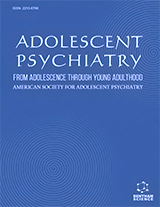Abstract
Non-Suicidal Self-Injury is a troubling phenomenon commonly encountered by clinicians working with adolescents and young adults. Professionals and laypersons alike struggle to understand the reasons individuals engage in this behavior and there is a paucity of information regarding the development and maintenance of the behavior. Although the Williams (2010) model is helpful in understanding NSSI, there has been no assessment tool available to date that evaluates where an individual falls within the purported stages. We have developed an assessment tool for Non-Suicidal Self-Injury based on a two-factor model of assessment of NSSI. The first factor is based upon Williams's (2010) categorical stage model of the extent of NSSI development. The second factor is based on Prochaska, DiClemente & Norcross's (1992) model of Readiness for Change. These factors have import for clinical decision making, treatment planning and determination of appropriate level of care. A version of the NSSI Assessment Tool is currently being used in a residential school setting with children between the ages of 11 to 19 years. Results from the NSSI Assessment Tool can be utilized to guide treatment and tailor interventions based upon the client's stage of NSSI and Readiness for Change. Initial clinical use has suggested repeated administrations of the NSSI Assessment Tool have been useful in monitoring client progress in treatment.
Keywords: Non-suicidal self-injury, readiness for change, stage model of NSSI, assessment of NSSI, progress monitoring, cutting, adolescents, deliberate self-harm, self-injurious behavior, self-mutilation, treatment, placement decisions, abrasion, intentional self-inflicted damage.































